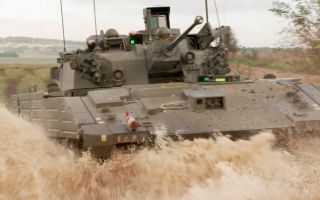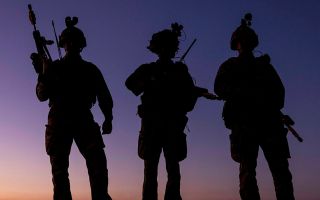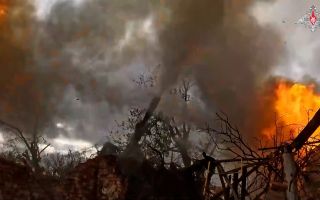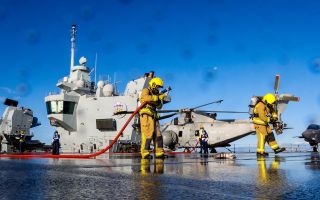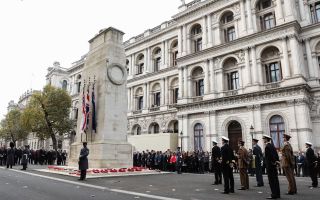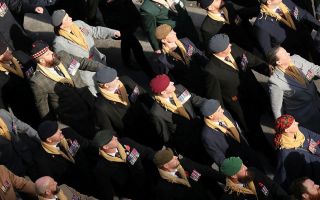Anti-drone system operating in Ukraine '90%' successful in detecting Russian drones
Big and expensive isn't always the key to success when it comes to weapons systems, with drones now playing an increasingly important part on the modern battlefield.
Easily bought, modified and weaponised, they are easy to proliferate.
And just as drones are rising in importance, so too is the technology needed to take them out – a lesson defence equipment companies are taking on board as a result of the war in Ukraine.
APS's Skyctrl anti-drone system is in operation in Ukraine, with the company claiming it has been 90% successful.
Arun Arumugam, sales director for APS Systems, told Forces News the "radars are uniquely designed to detect low, slow and small aerial targets".
"What is really quite exceptional about our radars are they're so effective at identifying the targets, reliably tracking them and, most importantly, instantly classifying them," he said, "to classify whether it's a bird or a drone.
"In doing so, you're able to allow the operator to make the right decision about what they want to do with the target."
It is also quick to assemble, with Mr Arumugam telling Forces News it takes less than five minutes to set up.
"The record we had is three-and-a-half minutes, because it's a click and lock system.
"It's very transportable, two guys put it in the back of a truck, drive off, assemble it and you have your full, comprehensive anti-drone system."
Another critical aspect of anti-drone systems is how easily they can be transported.
Another company, Marss, has launched an infantry version of its short-range interceptor drone, which carries no weapons and neutralises threats by smashing into them.
Stephen Scott, head of research and development for Defence at Marss, told Forces News they designed the system with the physical burden placed upon troops in mind.
"It's a tube-launched system with a targeting sight on it and so each individual infantry person could carry one," he said.
"It's very lightweight so the physical burden is really low, so total weight for the infantry version of the short-range is less than 4kg," he added. "We've been really conscious of the physical burden."

